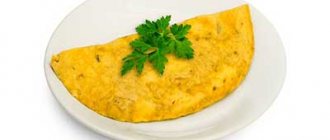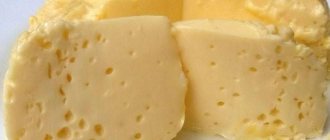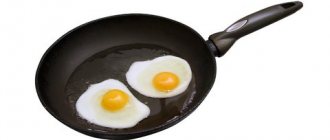Therefore, it is useful to add it to meat dishes, potatoes, pasta, pizza instead of delicious multi-ingredient ketchup.
A task force from the World Union Against Cancer examined large groups of people in Mediterranean countries. She came to the conclusion: men here get prostate cancer much less often - precisely because they eat spaghetti and pizza, popular in these parts, with tomato paste.
The preventive effect of tomato paste will be even more noticeable if you fry it in vegetable oil. Fry until the oil turns red. In this case, the total mass of the product is approximately halved: the water evaporates, and red tomato oil takes its place.
By the way, this is exactly what they do when preparing Ukrainian borscht. The Greeks and Spaniards add fried tomatoes to their national dishes. This means that people have long intuitively felt how to correctly extract the most valuable substance, probably without even knowing about its existence.
Tomatoes can be harmful for people with high stomach acidity and allergies, as tomatoes can cause allergies. Symptoms include hives, itching, skin rash, headache, abdominal pain, insomnia, hyperactivity, runny nose.
Conclusion: tomatoes are useful in any form, but fried, tomato oil is an excellent and affordable means of preventing cardiovascular diseases and cancer. The harm of tomatoes is mostly exaggerated and depends on the amount of consumption. published by econet. ru
PS And remember, just by changing your consumption, we are changing the world together! © econet
Join us on Facebook, VKontakte, Odnoklassniki
Mar-21-2013 Author: KoshkaS
Among the most common dishes that we prefer at breakfast is an omelet. This egg dish has a number of significant advantages, which explain its popularity. Omelette is easy to prepare, but at the same time tasty and healthy. Preparing an omelet is very easy - all you need to do is beat the eggs with salted milk, and pour the finished mixture into a frying pan with sunflower oil. To give the omelette an even richer taste, the ingredients include grated cheese, various meat products (for example, sausage, ham, etc.), as well as vegetables - onions, tomatoes, peppers, in general, whatever your imagination tells you.
Naturally, due to the popularity of the dish, many, especially adherents of a healthy diet and those who monitor their body weight, are interested in such simple questions as: what is the calorie content of an omelette, what are the benefits of an omelette and whether this dish has any dietary properties. First, about the beneficial properties:
Omelette, benefits and dietary properties:
Omelette has a number of useful properties. And among all the dishes made from eggs, omelet is probably the most healthy. This dish, if, of course, it was prepared correctly, retains all the beneficial properties of eggs.
Chicken eggs are a good source of biologically active components necessary for humans. Vitamins include vitamins A, B, B6, D and E, and folic acid (vitamin B9). The mineral composition is represented by iron, potassium, calcium, phosphorus, copper. They also contain essential amino acids and complete protein. At the same time, all of the listed substances are contained in the egg in an ideal balance, due to which they are absorbed by the body entirely.
One egg covers 25% of the daily amount of substances required by the body. Therefore, it is recommended to eat 2 eggs per day - in the form of an omelet and boiled.
But it is better not to eat raw eggs - they contain substances that interfere with the absorption of certain vitamins. Egg yolk contains vitamins B2, B12, A, D, lutein, iron, lecithin, and selenium in sufficient quantities. In addition, eggs can become a substitute for the best varieties of fish due to the presence of polyunsaturated fats and amino acids in them.
Complex omelettes
In addition to a simple omelet, you can prepare many other variations of the dish with the addition of various vegetables, meats and herbs.
With onion
Omelette with tomatoes and onions has an appetizing aroma. Onion is a natural antibiotic, stimulates digestive processes in the body, protects against infections, helps cleanse the blood, and lowers blood pressure. Therefore, do not neglect this vegetable.
You will need:
- eggs - 2 pieces;
- milk - 30 ml;
- tomato - 1 piece;
- onion - 1 piece;
- olive oil;
- salt.
Preparation
- Cut the onion into rings and fry.
- Coarsely chop the tomatoes, add to the onion and simmer for 1-2 minutes.
- Beat eggs with milk and pour over vegetables. Add some salt.
- It will take 5 minutes to prepare.
With cheese
You will need:
- eggs - 3 pieces;
- tomatoes - 3 pieces;
- milk - 40 ml;
- butter;
- hard cheese - 100 g;
- flour - 1 tablespoon;
- salt, herbs.
Preparation
- Wash the vegetables and remove the skins from them. Cut them into cubes.
- Grate the cheese.
- Separate the yolks from the whites, beat them with milk and flour. Add cheese, salt and beat again.
- Beat the whites into a stable foam and carefully fold into the omelette mixture.
- Fry the tomatoes a little, pour the omelette mixture on top.
- Cook the omelette for 5 minutes over low heat.
Sausage
You will need:
- sausage - 250 g;
- eggs - 3 pieces;
- tomato - 1 piece;
- onion - 1 head;
- vegetable oil, salt.
Preparation
- Cut the sausage into cubes. It should not be too greasy.
- Cut the onion into half rings, fry a little and add the sausage.
- Cut the tomato into pieces and add to the sausage.
- Beat the eggs, add salt and pour into the pan.
- In 3 minutes the dish is ready!
With greens
An omelet with tomatoes and herbs turns out to be beautiful and healthy. You can add any greens - parsley, oregano, dill, tarragon, basil, green onions.
You will need:
- eggs - 3 pieces;
- milk - 70 ml;
- tomato - 1 piece;
- cheese - half a glass;
- tomato sauce - 2 tablespoons;
- greenery;
- salt.
Preparation
- Cut the tomatoes into slices.
- Chop the greens and mix. Divide into two parts.
- Grate the cheese.
- Salt the eggs and beat with milk.
- Pour half of the egg mixture into the pan and sprinkle with cheese.
- Place tomato slices on top and sprinkle with one part of the herbs.
- Pour in the remaining mixture and carefully add the tomato sauce.
- Sprinkle the other half of the greens on top.
- Fry the omelette, covering it with a lid, for 6-7 minutes.
The recipe for an omelet with tomatoes is very simple. But you can get creative and add other ingredients that you like best. And every time you will receive a new delicious dish.
The calorie content of an omelet is, on average, 120 kcal per 100 grams of product
Its calorie content is determined by 10 grams. proteins, 16 gr. fat and only 2 gr. carbohydrates. Of course, this is an inaccurate result, since in addition to eggs, butter, milk and cheese, many other products that we talked about earlier are often added to the omelet.
What is the calorie content of an omelet prepared in different ways? And here it is:
Calorie table for omelet, per 100 grams of product:
| Product | Calories, in kcal |
| calorie content of omelette with milk | 115,0 |
| calorie content of omelette with tomatoes | 99,0 |
| calorie content of omelette with cheese | 342,0 |
| calories in omelet with mushrooms | 83,0 |
| calorie content of omelet with ham | 198,0 |
| calories in broccoli omelet | 104,0 |
| calorie content of omelette with vegetables | 156,0 |
| egg white omelette calories | 73,0 |
And the nutritional value of an omelet prepared in different ways is this:
Table of nutritional value of omelet (BJU), per 100 grams of product:
| Product | Squirrels, gr. | Fats, gr. | Carbohydrates, gr. |
| omelette with milk | 8,5 | 7,6 | 2,5 |
| omelette with tomatoes | 5,7 | 6,6 | 3,6 |
| Omelet with cheese | 16,0 | 29,0 | 2,5 |
| omelette with mushrooms | 5,3 | 6,1 | 2,5 |
| omelet with ham | 11,2 | 15,2 | 4,0 |
| broccoli omelette | 6,0 | 7,0 | 6,0 |
| omelette with vegetables | 6,2 | 13,2 | 3,5 |
| egg white omelette | 8,6 | 3,4 | 1,7 |
How to prepare this dish at home? Very simple! Here is one of the recipes:
Omelette with tomatoes:
- Egg - 4 pieces
- Cheese – 150 gr.
- Butter - 2 tablespoons
- Tomatoes - 3-4 pieces
- Green onions and salt - to taste
Tomatoes are peeled by first pouring boiling water over them so that the skin comes off more easily. The pulp is cut into pieces and fried in a frying pan (in butter). Place the fried tomatoes on a plate. Beat the eggs (with salt), combine them with finely chopped onion and shredded cheese. Everything gets mixed up. Melt the remaining butter in a frying pan, place the tomatoes on it and then pour in the prepared egg mixture.
The dish is baked over low heat for about 5-8 minutes. When the omelette is ready, you can decorate it with chopped dill, parsley or green onions. And eat healthy! True, the calorie content of an omelet prepared according to this recipe is not so small. Therefore, eat, but in moderation.
Recipe Omelette with tomatoes. Calorie, chemical composition and nutritional value.
Nutritional value and chemical composition of “Omelette with tomatoes.”
The table shows the nutritional content (calories, proteins, fats, carbohydrates, vitamins and minerals) per 100 grams of edible portion.
| Nutrient | Quantity | Norm** | % of the norm in 100 g | % of the norm in 100 kcal | 100% normal |
| Calorie content | 96.1 kcal | 1684 kcal | 5.7% | 5.9% | 1752 g |
| Squirrels | 7.2 g | 76 g | 9.5% | 9.9% | 1056 g |
| Fats | 6.1 g | 56 g | 10.9% | 11.3% | 918 g |
| Carbohydrates | 3.3 g | 219 g | 1.5% | 1.6% | 6636 g |
| Organic acids | 0.1 g | ~ | |||
| Alimentary fiber | 0.1 g | 20 g | 0.5% | 0.5% | 20000 g |
| Water | 77.5 g | 2273 g | 3.4% | 3.5% | 2933 g |
| Ash | 3.258 g | ~ | |||
| Vitamins | |||||
| Vitamin A, RE | 138.9 mcg | 900 mcg | 15.4% | 16% | 648 g |
| Retinol | 0.127 mg | ~ | |||
| beta carotene | 0.138 mg | 5 mg | 2.8% | 2.9% | 3623 g |
| Vitamin B1, thiamine | 0.052 mg | 1.5 mg | 3.5% | 3.6% | 2885 g |
| Vitamin B2, riboflavin | 0.273 mg | 1.8 mg | 15.2% | 15.8% | 659 g |
| Vitamin B4, choline | 119.49 mg | 500 mg | 23.9% | 24.9% | 418 g |
| Vitamin B5, pantothenic | 0.766 mg | 5 mg | 15.3% | 15.9% | 653 g |
| Vitamin B6, pyridoxine | 0.078 mg | 2 mg | 3.9% | 4.1% | 2564 g |
| Vitamin B9, folates | 4.057 mcg | 400 mcg | 1% | 1% | 9860 g |
| Vitamin B12, cobalamin | 0.415 mcg | 3 mcg | 13.8% | 14.4% | 723 g |
| Vitamin C, ascorbic acid | 2.19 mg | 90 mg | 2.4% | 2.5% | 4110 g |
| Vitamin D, calciferol | 0.968 mcg | 10 mcg | 9.7% | 10.1% | 1033 g |
| Vitamin E, alpha tocopherol, TE | 0.305 mg | 15 mg | 2% | 2.1% | 4918 g |
| Vitamin H, biotin | 10.58 mcg | 50 mcg | 21.2% | 22.1% | 473 g |
| Vitamin K, phylloquinone | 1.8 mcg | 120 mcg | 1.5% | 1.6% | 6667 g |
| Vitamin RR, NE | 1.9623 mg | 20 mg | 9.8% | 10.2% | 1019 g |
| Niacin | 0.231 mg | ~ | |||
| Macronutrients | |||||
| Potassium, K | 176.96 mg | 2500 mg | 7.1% | 7.4% | 1413 g |
| Calcium, Ca | 87.4 mg | 1000 mg | 8.7% | 9.1% | 1144 g |
| Silicon, Si | 1.217 mg | 30 mg | 4.1% | 4.3% | 2465 g |
| Magnesium, Mg | 12.12 mg | 400 mg | 3% | 3.1% | 3300 g |
| Sodium, Na | 1000.55 mg | 1300 mg | 77% | 80.1% | 130 g |
| Sera, S | 99.56 mg | 1000 mg | 10% | 10.4% | 1004 g |
| Phosphorus, P | 137.5 mg | 800 mg | 17.2% | 17.9% | 582 g |
| Chlorine, Cl | 1540.03 mg | 2300 mg | 67% | 69.7% | 149 g |
| Microelements | |||||
| Aluminium, Al | 49.6 mcg | ~ | |||
| Bor, B | 23.3 mcg | ~ | |||
| Vanadium, V | 0.1 mcg | ~ | |||
| Iron, Fe | 1.392 mg | 18 mg | 7.7% | 8% | 1293 g |
| Yod, I | 10.51 mcg | 150 mcg | 7% | 7.3% | 1427 g |
| Cobalt, Co | 6.627 mcg | 10 mcg | 66.3% | 69% | 151 g |
| Lithium, Li | 5.882 mcg | ~ | |||
| Manganese, Mn | 0.0506 mg | 2 mg | 2.5% | 2.6% | 3953 g |
| Copper, Cu | 74.21 mcg | 1000 mcg | 7.4% | 7.7% | 1348 g |
| Molybdenum, Mo | 9.061 mcg | 70 mcg | 12.9% | 13.4% | 773 g |
| Nickel, Ni | 2.637 mcg | ~ | |||
| Tin, Sn | 5.76 mcg | ~ | |||
| Rubidium, Rb | 31 mcg | ~ | |||
| Selenium, Se | 14.453 mcg | 55 mcg | 26.3% | 27.4% | 381 g |
| Strontium, Sr | 7.54 mcg | ~ | |||
| Fluorine, F | 38.92 mcg | 4000 mcg | 1% | 1% | 10277 g |
| Chromium, Cr | 3.79 mcg | 50 mcg | 7.6% | 7.9% | 1319 g |
| Zinc, Zn | 0.7558 mg | 12 mg | 6.3% | 6.6% | 1588 g |
| Zirconium, Zr | 0.97 mcg | ~ | |||
| Digestible carbohydrates | |||||
| Mono- and disaccharides (sugars) | 3 g | max 100 g | |||
| Essential amino acids | |||||
| Arginine* | 0.373 g | ~ | |||
| Valin | 0.363 g | ~ | |||
| Histidine* | 0.16 g | ~ | |||
| Isoleucine | 0.283 g | ~ | |||
| Leucine | 0.509 g | ~ | |||
| Lysine | 0.425 g | ~ | |||
| Methionine | 0.198 g | ~ | |||
| Methionine + Cysteine | 0.34 g | ~ | |||
| Threonine | 0.288 g | ~ | |||
| Tryptophan | 0.094 g | ~ | |||
| Phenylalanine | 0.307 g | ~ | |||
| Phenylalanine+Tyrosine | 0.533 g | ~ | |||
| Nonessential amino acids | |||||
| Alanin | 0.335 g | ~ | |||
| Aspartic acid | 0.58 g | ~ | |||
| Glycine | 0.198 g | ~ | |||
| Glutamic acid | 0.835 g | ~ | |||
| Proline | 0.189 g | ~ | |||
| Serin | 0.439 g | ~ | |||
| Tyrosine | 0.226 g | ~ | |||
| Cysteine | 0.137 g | ~ | |||
| Sterols (sterols) | |||||
| Cholesterol | 250.94 mg | max 300 mg | |||
| Saturated fatty acids | |||||
| Saturated fatty acids | 2.1 g | max 18.7 g | |||
| 14:0 Miristinovaya | 0.019 g | ~ | |||
| 15:0 Pentadecane | 0.005 g | ~ | |||
| 16:0 Palmitinaya | 0.967 g | ~ | |||
| 17:0 Margarine | 0.014 g | ~ | |||
| 18:0 Stearic | 0.415 g | ~ | |||
| 20:0 Arakhinovaya | 0.014 g | ~ | |||
| Monounsaturated fatty acids | 2.497 g | min 16.8 g | 14.9% | 15.5% | |
| 16:1 Palmitoleic | 0.184 g | ~ | |||
| 17:1 Heptadecene | 0.005 g | ~ | |||
| 18:1 Oleic (omega-9) | 1.929 g | ~ | |||
| 20:1 Gadoleic (omega-9) | 0.019 g | ~ | |||
| Polyunsaturated fatty acids | 0.614 g | from 11.2 to 20.6 g | 5.5% | 5.7% | |
| 18:2 Linolevaya | 0.519 g | ~ | |||
| 18:3 Linolenic | 0.028 g | ~ | |||
| 20:4 Arachidonic | 0.047 g | ~ | |||
| Omega-3 fatty acids | 0.1 g | from 0.9 to 3.7 g | 11.1% | 11.6% | |
| Omega-6 fatty acids | 0.9 g | from 4.7 to 16.8 g | 19.1% | 19.9% |
The energy value of Omelette with tomatoes is 96.1 kcal.
- Serving = 212 g (203.7 kcal)
Primary Source: Created in the application by the user. Read more.
** This table shows the average levels of vitamins and minerals for an adult. If you want to know the norms taking into account your gender, age and other factors, then use the “My Healthy Diet” application.
Omelette for weight loss
It would seem that there is nothing easier than making a delicious dietary fluffy omelette for breakfast. However, there are several secrets that will make your dish healthy and less caloric. A diet omelette can be prepared in the standard way in a frying pan, or in a slow cooker, microwave, or baked in the oven. The secret of a dietary omelet is to use only proteins in the dish, excluding yolks. This dish has a lower calorie content (54 kcal instead of 184).
What will please you on a diet is an omelette cooked in a slow cooker. Thanks to the airtight lid, the omelet in the multicooker turns out fluffy and tasty, does not lose its moisture, and also retains all its beneficial substances, in particular vitamin D. Even a classic omelet, the recipe of which everyone knows, will turn out incredibly juicy and tasty! The following programs are suitable for cooking: “Stewing”, “Multi-cook”, “Baking”, temperature 110 degrees, cooking time - 10 minutes.
Protein omelet: 7 dietary recipes with calorie content
There are dozens of ways to cook a protein omelet! I will tell you about the most successful and dietary ones in my opinion. Try the ones you like and you will always be provided with a tasty and low-calorie breakfast, snack or dinner.
The dish is incredibly healthy for the body, as it not only satisfies you for a long time, but also nourishes you with useful substances. I think these recipes will be especially useful for those who monitor the amount of protein in their diet and know how difficult it can be to reach the norm.
And omelettes made from proteins alone are the best way to make up for the deficiency; you don’t even have to buy protein mixtures!
What are the benefits of protein omelettes for pp-snacks?
Proteins are the “building material” for cells that the human body needs daily, as well as energy reserves.
Omelettes made from egg whites alone are practically pure protein ; in addition, by introducing such dishes into your diet, you will experience all its advantages:
- definitely won’t gain extra calories , but at the same time saturate your body with substances for its full functioning;
- Do you do strength sports? 3-4 omelettes per week (on training days) and muscle growth is guaranteed;
- there will be a natural normalization of metabolic processes;
- does not contain cholesterol, which is known to be found in yolks. Aren't you afraid of cholesterol? Then prepare a pp omelette from this selection;
- easy to digest, does not interfere with the functioning of the digestive system;
- satisfies hunger for a long time.
Most often, “pure protein” omelettes are fried in a frying pan, but you can use a microwave, slow cooker, oven and double boiler for these purposes.
It’s easy to calculate the calorie content of omelettes made from whites alone - each egg used, that is, white, is approximately 17.6 kcal, 4.4 g of protein, 0 g of fat and 0 g of carbohydrates. That is, a portion of an omelette of 3 proteins with 2-3 tbsp. milk is no more than 60 kcal!
Diet protein steamed omelet
This cooking method is the most dietary - without milk, only proteins that are steamed to the desired condition. There is butter in the composition - for lubricating the mold, but it has practically no effect on the calorie content and balance of the food, it is so small. The omelette itself turns out fluffy, airy, delicate in taste and very satisfying.
Nutritional value per 100 g:
- Calories: 72,2
- Proteins: 10,6
- Fats 3,3
Ingredients for 1 serving:
- chicken proteins - 3 pcs.
- water - 50 ml
- butter - 5 g
- salt - 1 pinch
How to cook:
Beat the whites with salt until stiff foam. To get the most stable foam, take chilled chicken eggs and make sure that not even a gram of yolk gets into the whites.
Pour water into the protein foam.
Gently mix everything with a spatula.
Grease the mold with oil. Why creamy? Because its aroma is ideally revealed in omelettes.
And don’t worry about the quality of butter - high-quality butter is a must in your diet! Only amateurs of a healthy lifestyle and nutritional diet write about the absolute harm of animal fats. Pour the whipped whites into the pan.
Place in the multicooker bowl on a wire rack. Run the steam program for 10 minutes.
The steamed protein omelette is ready. Bon appetit!
Recipe for protein omelet in a frying pan
This is a classic version of preparing the dish - it uses a frying pan and contains milk. The result is a fluffy baked omelette with a golden brown crust.
KBJU per 100 g: 41.6/8.4/0.2/1.5
The following products are required:
- protein - from 3 eggs
- milk – 50 g
- dill – 10 g
- 0.5 tsp olive oil if the pan is uncoated.
Cooking process:
- Chop the dill and place the frying pan on the fire to heat it up.
- Beat the whites with salt until fluffy. You can do it in a blender.
- Add milk, stir with a spoon or fork.
- Pour the resulting mass into a heated frying pan, simmer over low heat for 5 minutes under the lid. Then sprinkle with dill and keep on fire for another 1.5-2 minutes.
- Serve the omelet immediately.
Baked fluffy egg white omelette in the oven
This recipe is suitable even for people who adhere to proper nutrition not for the purpose of losing weight, but because of some health problems, for example, after surgery to remove the gallbladder. We will bake it in the oven, in a tall mold, in portions.
KBJU per 100 g: 72.4/7.9/3.8/1.6
Ingredients:
- protein - from 3 eggs
- milk – 50 ml
- salt - to taste
- butter – 5 g
- sour cream – ½ tbsp.
Step-by-step preparation:
- Combine the whites with milk, add salt, and beat the mixture with a whisk.
- Grease the mold with butter, transfer the protein-milk mixture, and carefully spoon sour cream on top.
- Place the pan in a preheated oven and bake for 20 minutes at 180 degrees.
- It is better to serve the omelet immediately hot, it cools quickly.
Protein omelet with cottage cheese for athletes and those losing weight
This dish contains a lot of protein, and a variety of it, so it is ideal for athletes and bodybuilders. For those losing weight, you simply can’t think of a better dinner option!
KBJU per 100 g: 75.9/14.2/1.1/2.3
Products for 1 serving:
- protein – 3 pcs.
- cottage cheese – 200 g
- green onions – 30 g
- salt pepper.
How to do:
- In a separate container, beat the egg whites, add the cottage cheese, and mix everything carefully.
- Wash and finely chop the green onions, add to the resulting curd mixture, add salt, pepper and mix.
- Preheat the frying pan, grease it with oil, if there is no non-stick coating, pour in the prepared omelette mixture. Cover with a lid and fry on both sides over low heat.
Delicious egg white omelette with tomatoes
Scrambled eggs with tomatoes are a classic of the genre. If you remove the yolk from the recipe, it also turns out quite interesting.
KBJU per 100 g: 59.1/5.5/3.2/2.1
Required ingredients:
- squirrels – 2 pcs.
- Cherry tomatoes – 2-3 pcs.
- parsley and dill - 2-3 stalks
- salt - to taste
- butter – 10 g.
We prepare in 5 stages:
- Pre-beat the whites, add a pinch of salt. There is no need to beat until strong peaks form, as the rest of the ingredients will simply drown in the whipped foam.
- Wash the cherry tomatoes under running water, cut into slices (they can be replaced with regular tomatoes or red bell peppers).
- Grease a heated frying pan with vegetable oil, add vegetables and herbs, pour in whipped egg whites.
- Simmer the dish for 3-5 minutes, and at the end sprinkle with ground black pepper.
Protein nutritious omelette with cheese for breakfast
This is the most delicious way to prepare a protein omelet. Any cheese is suitable, here you need to rely on your taste: semi-hard, salty, hard varieties. You can also use soft mozzarella or suluguni - it will also work out well.
KBJU per 100 g: 109.6/10/6.4/1.2
The following products are needed:
- protein – 2 pcs.
- cheese – 30-40 g
- milk – 1/3 tbsp.
- butter – 10 g
- salt, pepper, spices - to taste.
How to do:
- Grind a piece of cheese on a grater.
- Salt the whites, add pepper and spices, and beat with a whisk.
- Add milk, mix everything thoroughly.
- Grease the bottom of the pan with oil.
- Pour the protein mixture into the frying pan and top with grated cheese.
- Cover the pan with a lid and cook over low heat for 10 minutes.
How to cook a protein steam omelette in the microwave
This method is suitable for those who want to prepare a tasty and appetizing dish quickly. The taste is as tender as steamed protein omelettes. But less time is wasted.
KBJU per 100 g: 67.2/9.3/3/0.7
Products:
- squirrels – 2 pcs.
- sour cream (15%) – 1.5 tbsp.
- salt - to taste
- dill greens – 3-4 sprigs.
Procedure:
- Whisk the egg whites with salt.
- Add sour cream and chopped herbs, mix again until the mixture is fluffy and homogeneous.
- Transfer to a microwave-safe form.
- Place the container in the microwave oven.
- The omelet needs to be cooked for 2 minutes.
Nutritionist advice
If you are losing weight, then when preparing an omelet you need to add less oil or completely abandon it. Be sure to make an omelet with whipped whites in the morning at least a couple of times a week, cut it into portions and put one in a container to take to work. Then you will be provided with a healthy and nutritious snack.
Source: https://pp-vkusno.ru/dieticheskij-belkovyj-omlet.html
Nutritional value of omelet
To prepare a traditional omelette, all you need is 1 egg and a little milk. But you can find out the calorie content of an omelet made from 1 egg with milk only by knowing exactly what the nutritional value of each product is. The calorie content of eggs depends on their size.
The weight of an average product ranges from 30 to 70 g, but for ease of calculation, nutritionists take an egg weighing 40-50 g as a basis. Its nutritional value is 60 kcal. The fat content of milk plays an important role, but for preparing a dietary dish it is better to take the minimum - 1.5%. Therefore, the calorie content of an omelet made from 2 eggs with milk will be about 140-160 kcal. If you are making an omelet with other ingredients, you should add their calorie content to the nutritional value of eggs. If you cannot tolerate milk, you can dilute it half and half with water. Due to this, the nutritional value of the dish will decrease slightly. The calorie content of an omelet made from 3 eggs with milk is 200-230 kcal.
If you add only 10 g of butter to an omelet, the nutritional value of the dish will increase by 90 kcal. This happens if the dish is prepared by frying. But its calorie content can be reduced if you cook the omelette in the oven or microwave, only by greasing the pan with fat.
Several arguments in defense of the "poor man's dish"
In the old days, scrambled eggs were considered too simple a food; they were served in low-income families. In the “biography” of this food there were periods when it was stigmatized due to the presence of cholesterol. Now nutritionists are vying with each other to praise its dietary properties and declare that it must be present in the diet. After all, it turned out that the cholesterol in it is not harmful, but is full of valuable microelements. It is impossible to gain weight from eggs, but improving your mental abilities is quite possible!
For those losing weight, the following information will be useful:
- scrambled eggs themselves do not belong to the category of high-calorie dishes (167 energy units is a mere trifle!);
- when using it, you need to know when to stop;
- if the calorie problem is very acute, stop eating the yolk;
- When deciding whether to include it in the menu, remember that one of the most high-calorie food components is oil. In creamy - 748 kcal, in vegetable - up to 899. Therefore, by preparing fried eggs using them, you automatically add 90 kcal to yourself. And the daily calorie limit for a lady of average height who has decided to lose weight is 700-1400 kcal. So take the Teflon-coated frying pan out of the cupboard.
Omelet for diets: five ways to reduce its nutritional value
If you approach this issue radically, then you need to cook it in a slow cooker or oven and exclusively from proteins. The calorie content of the dish will be reduced by 3-4 times, but the taste of such a “culinary masterpiece” can only curb your appetite for a long time.
Here are some gentler methods you can use to reduce the number of calories in your favorite foods:
- take milk with a fat content of 2.5% (abstain from cream, sour cream and homemade milk completely);
- use low-fat hard cheese;
- Stew the vegetables a little first;
- fry completely without fat in a non-stick frying pan.
The history of the word “omelet” goes back to France. But, nevertheless, dishes that are omelettes belong to the national dishes of many countries. Every cuisine has its own version of omelet. In Italy, for example, they prepare tortilla, which consists of seventy percent eggs, and in Japan - omu-rice, whose calorie content is 200 kcal.
There is also an opinion that the omelet was invented by the Austrian poor, who used black stale bread to make this dish. Another version of preparing an omelet says that it was invented by a simple Viennese chef. Even then, medieval beauties were interested in: what is the calorie content of an omelet? In fact, omelet is not only healthy, but also has high energy value.
Before talking about the calorie content of an omelet, it’s probably worth saying a few words about the products from which it is prepared, more precisely about eggs and their beneficial properties.
Calories for breakfast
Determining the calorie content of scrambled eggs from 2 eggs is quite simple, because unlike multi-component dishes, it only has one or two ingredients. Energy value indicators depend on the mass of eggs. They can be small or large. It is generally accepted that the weight of a medium-sized one is 58 g. Thus, two will weigh 116 g. 100 g of protein-yolk mass contains 157 kcal, that is, one medium-sized raw egg has about 91 kcal, and two, respectively, 182. If its mass is slightly less - 47 g, then it will contain 73.8 units of energy.
Two-thirds of this reserve is contained in the yolk, the rest is in the white. This distribution of calories will become clear if you look at what is inside the white and yolk. The first is 90% water, 10% is protein, the second includes fat (11.6 g) and cholesterol (139 mg).
Today, thanks to non-stick cookware, you can fry without a drop of fat. A standard scrambled egg of 2 eggs, cooked without oil, will have a calorie content of 148-182 kcal. The average is 167 kcal. This is almost 10% of the safe daily value, which is quite a bit. That is, it can be called dietary - unless, of course, it is included in the menu for breakfast, lunch and dinner. If you take small eggs, which contain 61 kcal, you will be able to reduce the number of calories in the fried egg to 122.











